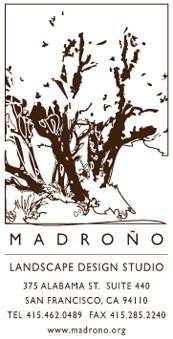 Words bestow immortality: just as the book outlives its author, a name can outlast its human corollary. Many California landmarks bear the names of historic families, for example, providing a subtext that enhances our sense of local identity. The story behind each name can add even greater value, much like the bones of our ancestors that enrich the earth in deepening layers of fertility.
Words bestow immortality: just as the book outlives its author, a name can outlast its human corollary. Many California landmarks bear the names of historic families, for example, providing a subtext that enhances our sense of local identity. The story behind each name can add even greater value, much like the bones of our ancestors that enrich the earth in deepening layers of fertility.
Take Mount Wanda, a golden-brown foothill of grassland and old-growth oak perched between the East Bay's rural Alhambra Valley and the highly industrial town of Martinez. This 660-foot peak was named for John Muir's eldest daughter, an apt parallel if we recognize such preserved natural areas as the great man's "other progeny," and his more enduring legacy. Muir married into an established local ranching family and lived here in Martinez from 1882 until his death in 1914. His modest writing desk, still there on an upper floor of the old family mansion, witnessed the work that saved Yosemite, launched the Sierra Club, and laid the foundation for the National Park Service. When necessity prevented Muir from traveling to the high Sierra, he contented himself with long walks through these low foothills, where the time-gnarled limbs of the oaks served as a lifeline to the desolate nature he craved. Today the 325 acres of Mt. Wanda, together with the Muir house and the adjacent Martinez Adobe, are open to the public as a national historic site.
These old oaks, untouched by industry, stand in stark contrast to the chemical plants and oil refineries of modern Martinez. The valley oak (Quercus lobata) lives to be 300 years old with an immense crown often topping 100 feet in both height and span; its silhouette of gracefully drooping limbs assumes the shape of a gigantic grape vine, and its deciduous leaves are deeply lobed, hence the specific epithet. The blue oak (Q. douglasii) earns its common name from the bluish-green tint of its foliage, also deciduous, and it can reach 20-60 feet tall growing in thin soils or from crevices between rocks. The coast live oak (Q. agrifolia), with its burly trunk, and the interior live oak (Q. wislizenii), usually of more modest stature, add their serrated evergreen leaves to the canopy. The word "Quercus" comes from Latin; it is an ancient name for oak that predates ancient Rome.

